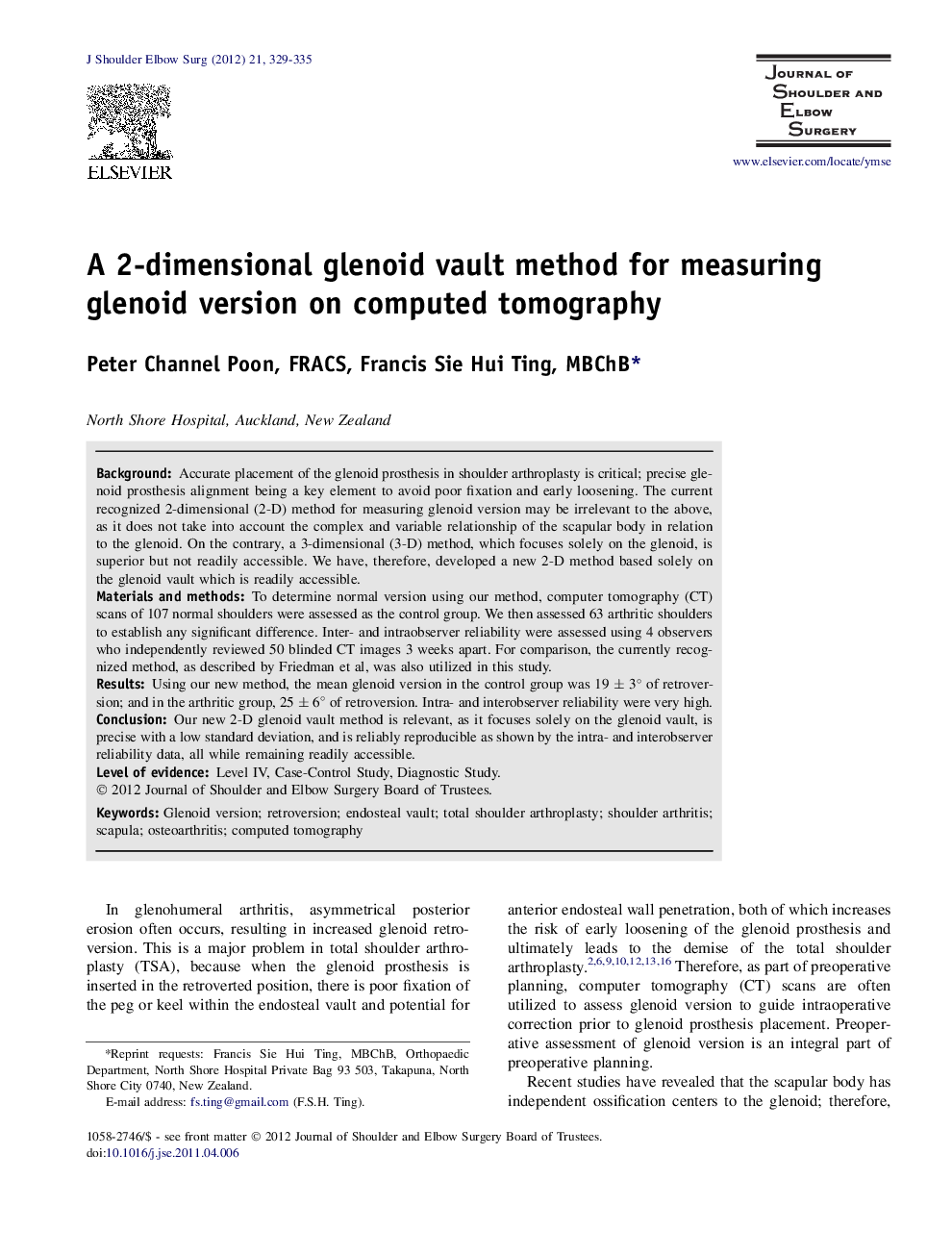| Article ID | Journal | Published Year | Pages | File Type |
|---|---|---|---|---|
| 4074596 | Journal of Shoulder and Elbow Surgery | 2012 | 7 Pages |
BackgroundAccurate placement of the glenoid prosthesis in shoulder arthroplasty is critical; precise glenoid prosthesis alignment being a key element to avoid poor fixation and early loosening. The current recognized 2-dimensional (2-D) method for measuring glenoid version may be irrelevant to the above, as it does not take into account the complex and variable relationship of the scapular body in relation to the glenoid. On the contrary, a 3-dimensional (3-D) method, which focuses solely on the glenoid, is superior but not readily accessible. We have, therefore, developed a new 2-D method based solely on the glenoid vault which is readily accessible.Materials and methodsTo determine normal version using our method, computer tomography (CT) scans of 107 normal shoulders were assessed as the control group. We then assessed 63 arthritic shoulders to establish any significant difference. Inter- and intraobserver reliability were assessed using 4 observers who independently reviewed 50 blinded CT images 3 weeks apart. For comparison, the currently recognized method, as described by Friedman et al, was also utilized in this study.ResultsUsing our new method, the mean glenoid version in the control group was 19 ± 3° of retroversion; and in the arthritic group, 25 ± 6° of retroversion. Intra- and interobserver reliability were very high.ConclusionOur new 2-D glenoid vault method is relevant, as it focuses solely on the glenoid vault, is precise with a low standard deviation, and is reliably reproducible as shown by the intra- and interobserver reliability data, all while remaining readily accessible.
